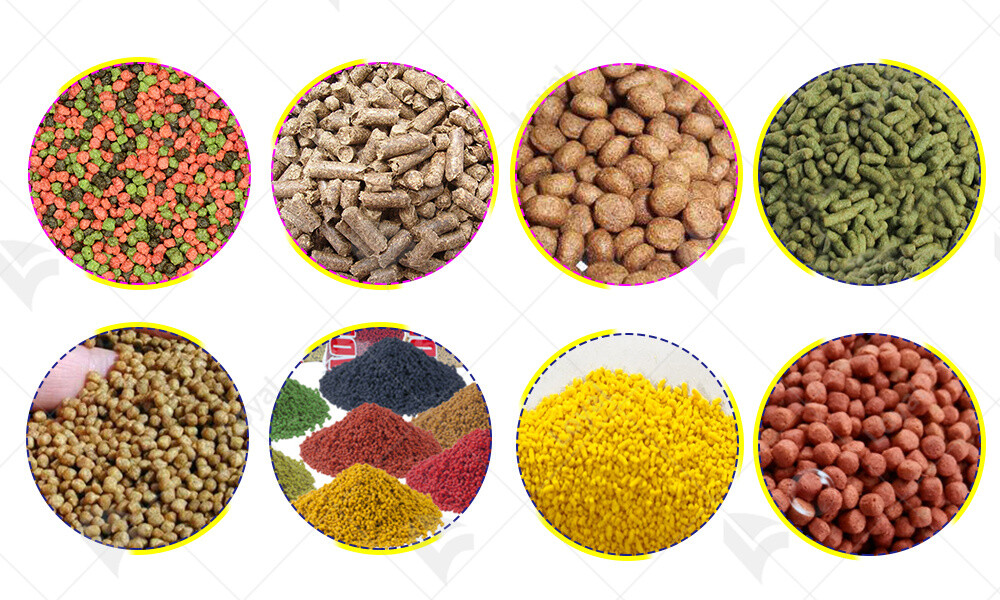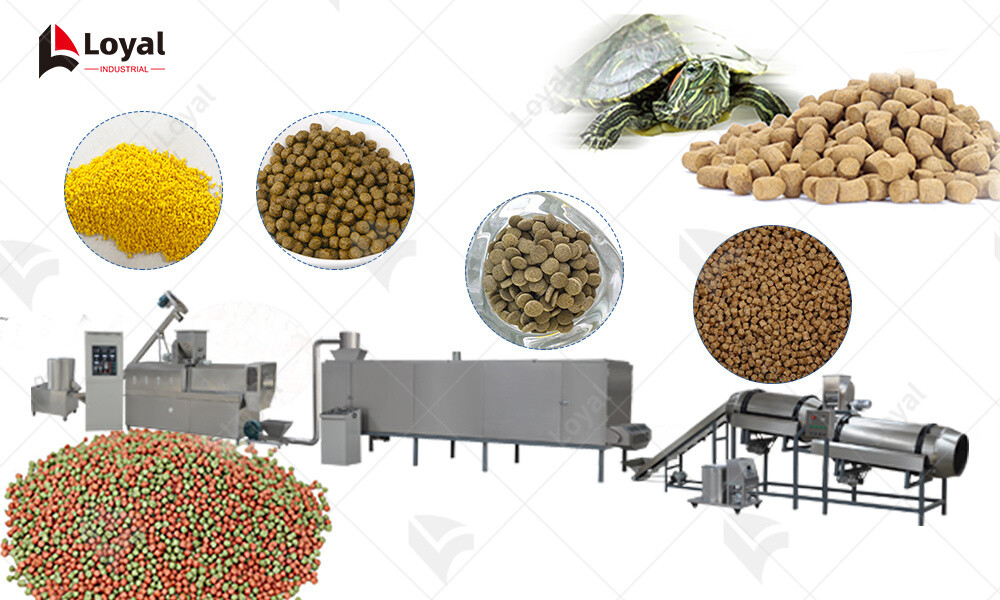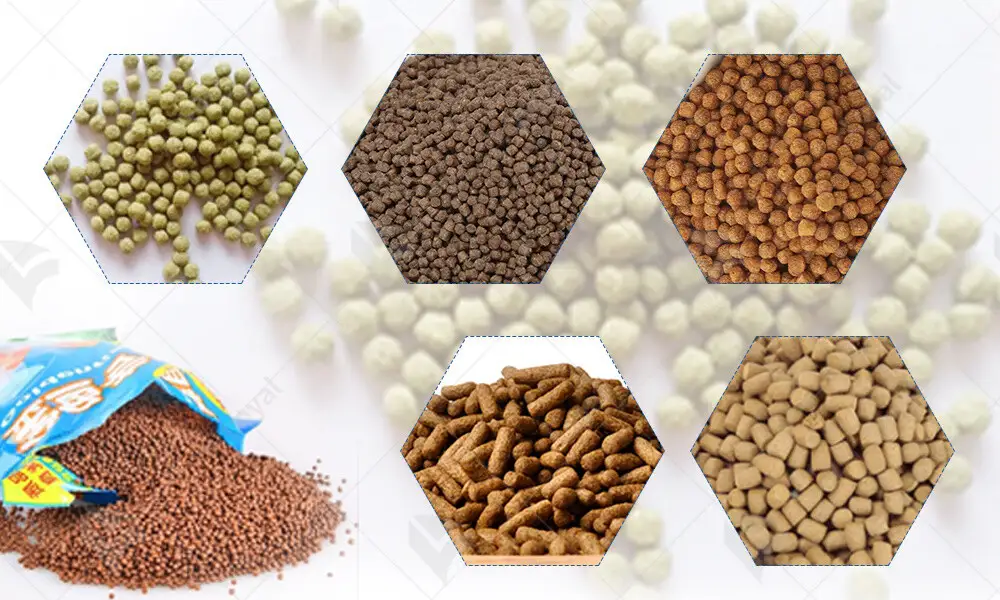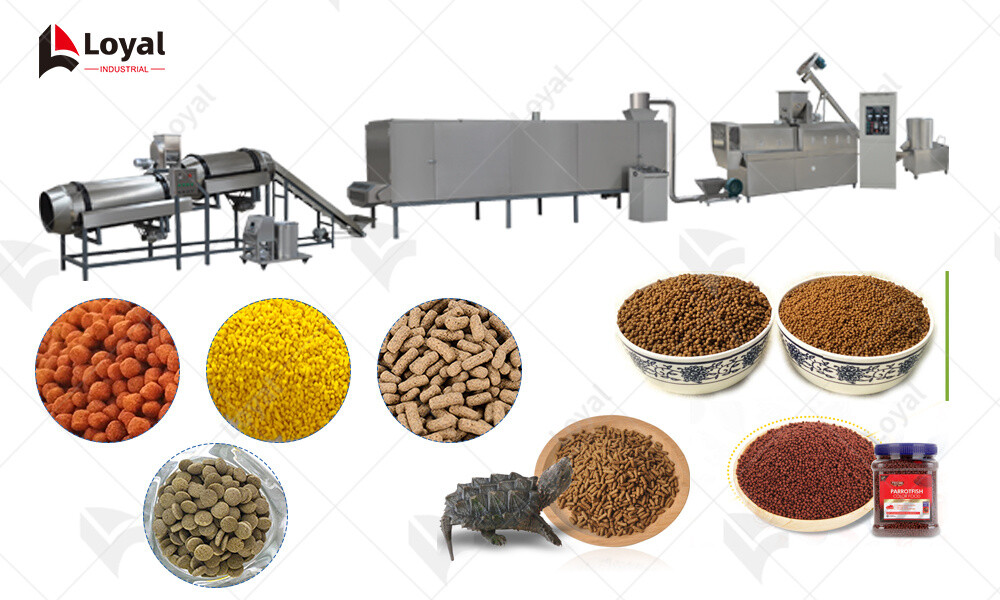Unlock The Secrets Of EfficientFish Feed Pellet MachineManufacturing
Key Components and Functionality of Fish Feed Pellet Machines
1.The Feeding System:
The feeding system is the foundational component of the Fish Feed Pellet Machine. It comprises hoppers, conveyors, and feeders that meter the raw ingredients into the mixing chamber. These ingredients, often a blend of proteins, fats, carbohydrates, vitamins, and minerals, must be precisely measured to ensure consistent pellet quality. The feeding system ensures a steady and controlled flow of materials, preventing overfeeding or underflow, which can disrupt the production process.
2.The Mixing Chamber:
After the raw ingredients are fed into the machine, they enter the mixing chamber. This component is designed to thoroughly blend the ingredients to achieve a homogeneous mixture. Mixing is critical as it ensures that each pellet contains the necessary nutrients in the correct proportions. The mixing chamber often features rotating blades or paddles that facilitate even distribution and ensure that no pockets of unmixed ingredients remain. The design and efficiency of the mixing chamber directly impact the quality and nutritional balance of the final pellets.
3.The Extrusion System:
The extrusion system is the heart of the Fish Feed Pellet Machine. It consists of a heated, pressurized barrel, known as the extruder, and a die plate with holes of various sizes and shapes. The mixed ingredients are fed into the extruder, where they are subjected to heat, pressure, and friction. This combination causes the mixture to soften and form a dough-like consistency. The dough is then forced through the die plate, which shapes the pellets into the desired form.
The extruder's temperature and pressure settings are crucial for achieving the right dough consistency. Too high or too low settings can affect the pellet's shape, texture, and nutritional content. The die plate's design determines the final size, shape, and texture of the pellets, which should be tailored to the specific dietary needs and preferences of the fish species being fed.
4.The Cutting Assembly:
As the dough exits the die plate, it is cut into individual pellets by the cutting assembly. This component, positioned closely behind the die plate, consists of knives or blades that slice the extruded material into uniform pieces. The speed and positioning of the cutting assembly can be adjusted to control the length and thickness of the pellets, ensuring that they meet the desired specifications.
5.The Cooling and Drying System:
Finally, the pellets are transported to a cooling and drying area. This step is vital for removing excess moisture and firming up the pellets. Proper cooling and drying enhance the pellets' durability, reduce the risk of spoilage, and extend their shelf life. The cooling and drying system may utilize fans, conveyors, or other mechanical devices to ensure that the pellets are evenly cooled and dried.

Preparing for Operation: Safety and Maintenance
Operating a Fish Feed Pellet Machine for optimal output requires not only an understanding of its components and functionality but also meticulous preparation in terms of safety and maintenance.
Safety Protocols:
Before initiating the operation of your Fish Feed Pellet Machine, safety must be your top priority. Here are some essential safety protocols to follow:
Personal Protective Equipment (PPE) | Always wear appropriate PPE, including safety glasses, gloves, ear protection, and a dust mask. This will protect you from flying debris, dust, and loud noises that may occur during the operation. |
Machine Inspection | Conduct a thorough inspection of the machine before each use. Check for any signs of wear, damage, or debris that could pose a safety hazard. Ensure that all guards, covers, and safety devices are in place and functioning correctly. |
Lockout/Tagout Procedures | Implement lockout/tagout procedures to prevent unexpected machine startup during maintenance or repairs. This involves using locks and tags to isolate the machine's energy sources, such as electrical switches or valves. |
Emergency Stop Buttons | Familiarize yourself with the location and function of the emergency stop buttons. These buttons are designed to quickly halt the machine in the event of an emergency, reducing the risk of injury. |
Training and Supervision | Ensure that all operators are properly trained on the machine's operation, safety protocols, and emergency procedures. Supervision by experienced personnel during initial operations can also help mitigate risks. |
Maintenance Practices | Regular maintenance is essential for ensuring the optimal performance and longevity of your Fish Feed Pellet Machine. |
Here are some key maintenance practices to follow:
Lubrication | Regularly lubricate moving parts, such as bearings, gears, and shafts, to reduce friction and wear. Follow the manufacturer's recommendations for the type and frequency of lubrication. |
Cleaning | Keep the machine clean by removing any build-up of dust, debris, or residue. Use appropriate cleaning agents and tools to avoid damaging the machine's surfaces or components. |
Wear Part Replacement | Inspect wear parts, such as blades, dies, and bearings, regularly. Replace worn parts promptly to prevent further damage to the machine and ensure consistent pellet quality. |
Alignment and Adjustment | Check the alignment and adjustment of all moving parts. Misalignment can cause vibration, wear, and reduced efficiency. Use precision tools and techniques to ensure proper alignment. |
Electrical and Hydraulic Systems | Inspect electrical connections and hydraulic systems regularly for signs of wear, corrosion, or leakage. Ensure that all components are operating within specified parameters and replace any defective parts as needed. |
Documentation and Record Keeping | Maintain detailed records of all maintenance activities, including dates, parts replaced, and any issues or repairs performed. This documentation will help you track the machine's maintenance history and identify potential problems before they become critical. |

Step-by-Step Operation of the Fish Feed Pellet Machine
Now that you have prepared your Fish Feed Pellet Machine for operation by adhering to the safety protocols and maintenance practices outlined in the previous sections, it's time to dive into the step-by-step operation of the machine.
Step 1: Preparing the Ingredients
Before starting the machine, ensure that you have all the necessary ingredients prepared and measured accurately. Common ingredients for fish feed pellets include proteins, fats, carbohydrates, vitamins, and minerals. Mix these ingredients thoroughly to ensure a homogeneous blend.
Step 2: Loading the Ingredients
Once the ingredients are prepared, load them into the hopper of the Fish Feed Pellet Machine. The hopper is the component where the raw materials are fed into the machine. Ensure that the hopper is clean and free of any debris or residue from previous batches.
Step 3: Setting the Machine Parameters
Adjust the machine parameters according to the specific recipe and desired pellet size. This includes setting the die size, feed rate, and extruder temperature. The die size determines the diameter of the pellets, while the feed rate controls the speed of ingredient input into the extruder. The extruder temperature is crucial for ensuring proper gelatinization and binding of the ingredients.
Step 4: Starting the Machine
With all parameters set and ingredients loaded, it's time to start the Fish Feed Pellet Machine. Ensure that all safety guards and covers are in place before initiating the startup sequence. Turn on the power supply and start the extruder motor. Gradually increase the feed rate to the desired level, allowing the machine to warm up and reach operating temperature.
Step 5: Monitoring the Pellet Formation
As the machine begins to extrude the pellets, closely monitor their formation and quality. Check for any inconsistencies in size, shape, or texture. Adjust the machine parameters as needed to achieve the desired pellet characteristics. If necessary, stop the machine and inspect the die or extruder for any blockages or wear.
Step 6: Cooling and Drying the Pellets
Once the pellets are formed, they need to be cooled and dried to prevent moisture-related issues, such as mold growth or spoilage. This can be achieved using a cooling conveyor or dryer attached to the Fish Feed Pellet Machine. Ensure that the pellets are evenly distributed and exposed to adequate airflow for proper cooling and drying.
Step 7: Packaging and Storage
After cooling and drying, the pellets are ready for packaging and storage. Use airtight containers or bags to prevent moisture and air exposure. Label the packages with the batch number, date, and any other relevant information. Store the pellets in a cool, dry place to maintain their quality and shelf life.

Enhancing Output Quality: Tips and Techniques
Achieving optimal output from your Fish Feed Pellet Machine involves not only proper operation but also employing techniques to enhance the quality of the pellets produced.
Optimize Ingredient Ratio | The quality of your fish feed pellets begins with the ingredients you use. Ensure that your recipe includes a balanced ratio of proteins, fats, carbohydrates, vitamins, and minerals tailored to the specific needs of your fish species. Regularly test and adjust the ingredient ratio based on the growth performance and health of your fish. |
Use High-Quality Ingredients | Investing in high-quality ingredients can significantly improve the quality of your fish feed pellets. Opt for ingredients that are free from contaminants, have high nutritional value, and are easily digestible by fish. High-quality ingredients will result in pellets that are more palatable, nutritious, and less likely to cause digestive issues. |
Control Extrusion Temperature | The extrusion temperature plays a crucial role in determining the quality of the pellets. The optimal temperature range depends on the specific ingredients and recipe used. Too low a temperature may result in poor gelatinization and binding, while too high a temperature can cause scorching or nutrient destruction. Regularly monitor and adjust the extrusion temperature to achieve the desired pellet quality. |
Monitor Pellet Size and Shape | The size and shape of the pellets can affect their digestibility and feed conversion efficiency. Use dies of the appropriate size to produce pellets that are easy for fish to swallow and digest. Additionally, ensure that the pellets have a consistent shape and texture to prevent sorting and waste. |
Implement Quality Control Measures | Implementing quality control measures throughout the production process can help identify and correct potential issues before they affect the final product. Regularly test the pellets for moisture content, nutrient composition, and physical properties. Use sampling techniques to ensure that the entire batch meets quality standards. |
Maintain Machine Hygiene | Cleanliness is essential for producing high-quality fish feed pellets. Regularly clean and sanitize the Fish Feed Pellet Machine and its components to prevent contamination and build-up of residue. Use food-grade cleaning agents and follow the manufacturer's instructions for proper cleaning and maintenance. |

The Benefits of Optimal Fish Feed Pellet Machine Output
Operating a Fish Feed Pellet Machine to achieve optimal output is crucial for the success of any aquaculture operation. Here are some of the key advantages of optimizing the output of your Fish Feed Pellet Machine:
1.Increased Feed Conversion Efficiency
Optimal output from your Fish Feed Pellet Machine results in pellets that are uniform in size, shape, and density. These consistent pellets ensure that fish consume the feed more efficiently, leading to improved feed conversion efficiency. Higher feed conversion efficiency means that more of the nutrients in the feed are utilized by the fish for growth, reducing waste and lowering feed costs.
2.Enhanced Nutrient Utilization
Producing high-quality fish feed pellets involves using a precise formulation of ingredients tailored to the specific nutritional needs of your fish species. When the Fish Feed Pellet Machine operates optimally, it ensures that these ingredients are uniformly mixed and extruded into pellets that are easily digestible. This results in better nutrient utilization by the fish, promoting faster growth rates and improved overall health.
3.Improved Palatability and Acceptance
Optimal output from the Fish Feed Pellet Machine also means producing pellets that are palatable and easily accepted by fish. Pellets with the right texture, moisture content, and flavor can enhance the feeding behavior of fish, encouraging them to consume more feed. This leads to increased energy intake and better growth performance.
4.Cost Savings
Achieving optimal output from your Fish Feed Pellet Machine can also result in significant cost savings. Efficient production reduces waste, minimizes downtime, and extends the lifespan of the machine's components. Additionally, producing high-quality pellets reduces the need for supplementary feeding, further lowering operational costs.
5.Environmental Benefits
Optimal fish feed pellet production minimizes waste and pollution, contributing to more sustainable aquaculture practices. Efficient utilization of feed ingredients and reduced waste disposal have positive environmental impacts, promoting healthier aquatic ecosystems.

Reference
The following are five authoritative foreign literature websites in the field of Industrial food machinery:
1. Food Engineering Magazine
Website: https://www.foodengineeringmag.com/
2.Food Processing Magazine
Website: https://www.foodprocessing.com/
3.Journal of Food Engineering
Website:https://www.journals.elsevier.com/journal-of-food-engineering
4. Food Manufacturing Magazine
Website:https://www.foodmanufacturing.com/
5. International Journal of Food Science & Technology
Website:https://onlinelibrary.wiley.com/












